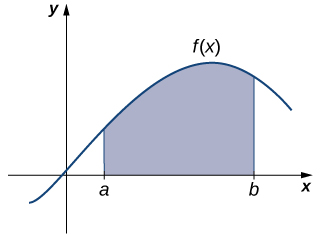| << Chapter < Page | Chapter >> Page > |
Let be the position of an object moving along a coordinate axis at time t . The average velocity of the object over a time interval where (or if is
As t is chosen closer to a , the average velocity becomes closer to the instantaneous velocity. Note that finding the average velocity of a position function over a time interval is essentially the same as finding the slope of a secant line to a function. Furthermore, to find the slope of a tangent line at a point a , we let the x -values approach a in the slope of the secant line. Similarly, to find the instantaneous velocity at time a , we let the t -values approach a in the average velocity. This process of letting x or t approach a in an expression is called taking a limit . Thus, we may define the instantaneous velocity as follows.
For a position function the instantaneous velocity at a time is the value that the average velocities approach on intervals of the form and as the values of t become closer to a , provided such a value exists.
[link] illustrates this concept of limits and average velocity.
A rock is dropped from a height of 64 ft. It is determined that its height (in feet) above ground t seconds later (for is given by Find the average velocity of the rock over each of the given time intervals. Use this information to guess the instantaneous velocity of the rock at time
Substitute the data into the formula for the definition of average velocity.
The instantaneous velocity is somewhere between −15.84 and −16.16 ft/sec. A good guess might be −16 ft/sec.
An object moves along a coordinate axis so that its position at time t is given by Estimate its instantaneous velocity at time by computing its average velocity over the time interval
12.006001
We now turn our attention to a classic question from calculus. Many quantities in physics—for example, quantities of work—may be interpreted as the area under a curve. This leads us to ask the question: How can we find the area between the graph of a function and the x -axis over an interval ( [link] )?

As in the answer to our previous questions on velocity, we first try to approximate the solution. We approximate the area by dividing up the interval into smaller intervals in the shape of rectangles. The approximation of the area comes from adding up the areas of these rectangles ( [link] ).
![The graph is the same as the previous image, with one difference. Instead of the area completely shaded under the curved function, the interval [a, b] is divided into smaller intervals in the shape of rectangles. The rectangles have the same small width. The height of each rectangle is the height of the function at the midpoint of the base of that specific rectangle.](/ocw/mirror/col11964/m53485/CNX_Calc_Figure_02_01_007.jpg)
As the widths of the rectangles become smaller (approach zero), the sums of the areas of the rectangles approach the area between the graph of and the x -axis over the interval Once again, we find ourselves taking a limit. Limits of this type serve as a basis for the definition of the definite integral. Integral calculus is the study of integrals and their applications.

Notification Switch
Would you like to follow the 'Calculus volume 1' conversation and receive update notifications?